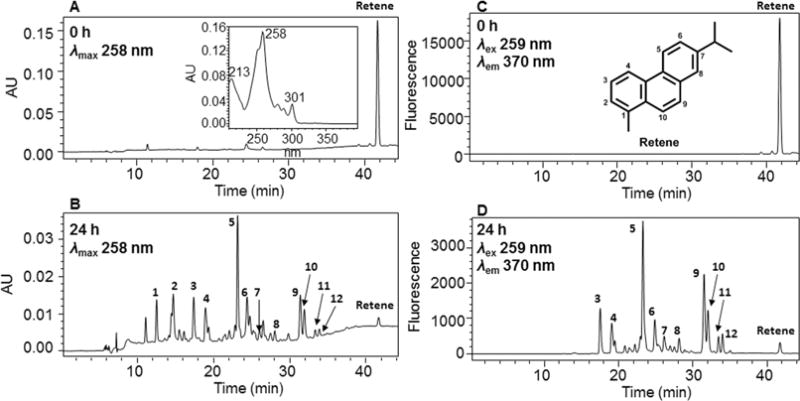Figure 1.

HPLC detection of retene metabolites in human HepG2 cells. (A) UV chromatogram at λmax 258 nm at 0 h. (B) UV chromatogram at λmax 258 nm at 24 h. (C) FLR chromatogram at λex 259 nm and λem 370 nm at 0 h. (D) FLR chromatogram at λex 259 nm and λem 370 nm at 24 h. Human HepG2 cells (~5 × 106) were treated with retene (1 μM, 0.2% (v/v) DMSO) in MEM (without phenol red) containing 10 mM glucose. The cell media were collected at 0 and 24 h, respectively, and subsequently acidified with 0.1% formic acid before extraction with ethyl acetate. The extracts were analyzed by HPLC-UV-FLR detection.
